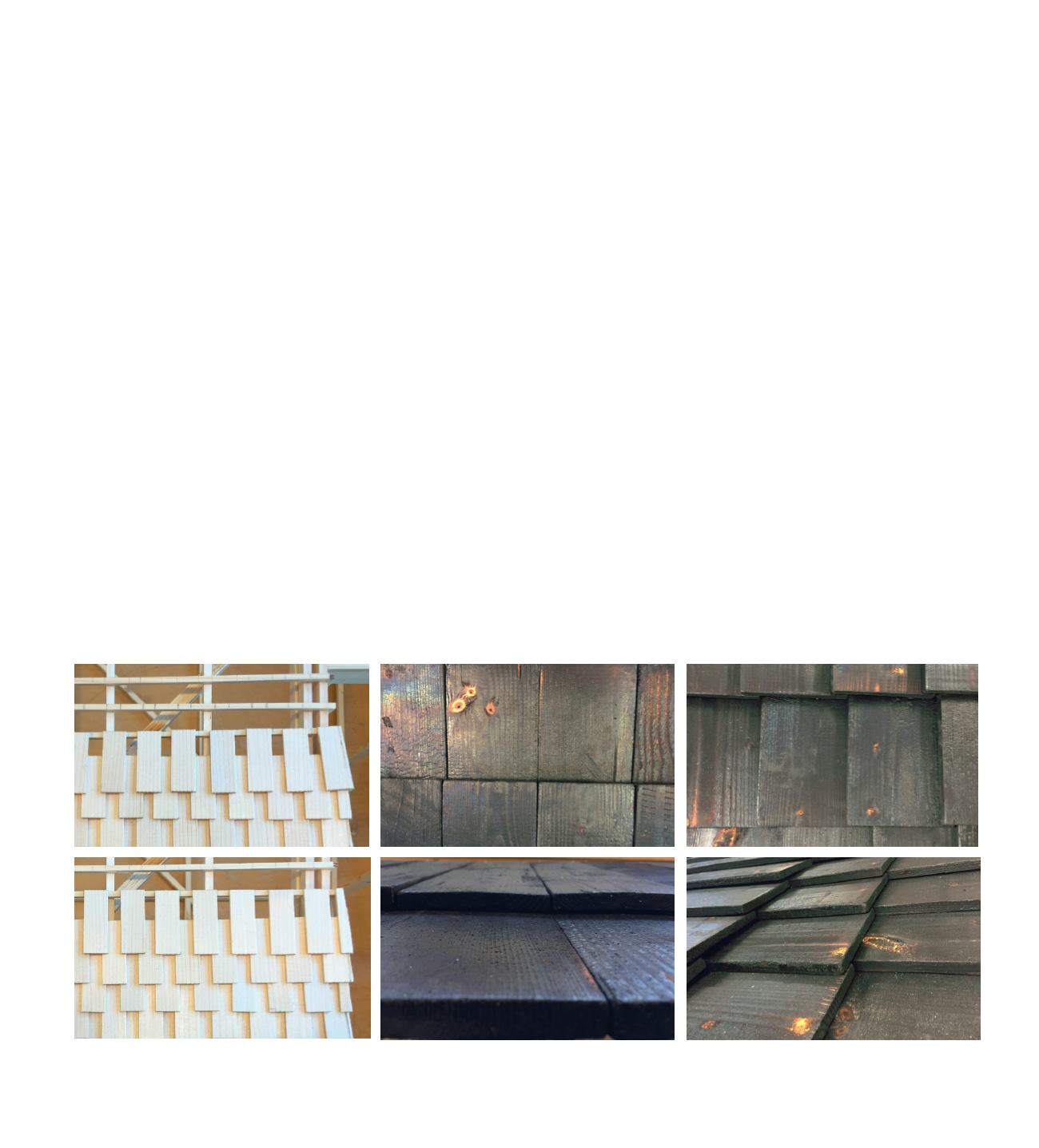

129
systems & ProfIles
shingles can be put into different systems and patterns. the
decision of which system to use is often based on two factors:
function and aesthetics.
function meaning that the shingles need a system that will
allow them to dry out quickly to avoid rot and fungus. there are
different systems for different weather conditions. the oblique
overlapping system (ex.3) is made for more windy weather
conditions. the overlapping top should face the direction where
the wind normally comes from in order for the water not to run
into the overlapping part. this system can also be regulated to
how much you want to air it out. In the pictures it is the least
amount of air going through, in the picture from røros (lower
left) there is maximum air going through.
on the other hand, when considering how to best dry out
shingles the length of the shingle is more important than the
thickness. this because the wood mainly dries through its
fibers vertically (like straws), not across its fiber direction.
When it comes to aesthetics it’s just important to be aware of
what different expressions the different shingle-systems give.
We could also choose to cut the end of the shingles differently
to give it a more dynamic feel.
our consIderatIons
We chose to use a system that overlaps every second shingle
and every second batton (ex.1). this system supplies plenty
of air to dry shingles, but also uses more batton material.
our shingles are 12mm thick, which is quite thin for sawn
shingles. they are 150mm wide and 400mm long. We think
this combination of system and shingle profile gives a good
expression on our structure because we have such a massive
wall. many other shingle projects from earlier times have
smaller shingles, but are also more petite. scaling up the
shingle size seemed to fit the scale of our 5x5 meter cube.
the treatment of our shingles is somewhat more unorthodox.
Inspired by the traditional japanese technique shou suge Ban,
we decided to burn our shingles. the technique was devised as
a way to make wood less susceptible to fire, water and to keep
away insects, rot and mould. the alkaline environment in the
char keeps the bugs and microorganisms from thriving there.
the outer sapwood is burned , so water doesn’t draw in as
easily. since both shingle sides would be exposed we decided to
burn both sides of aestherical reasons.
the shingles are also treated with linseed oil to fill the wood
cell fibres, so it doesn’t draw water as easily. the linseed oil
also binds the char together so it doesn’t come off as easily.
this was an important thing for us, since we didn’t want all that
visited to go home with black sot on their clothing.
ex.1: overlaPPIng every second shIngle and every
second Batton(from 1:10 model In the Wood Work-
shoP)
ex.2:edge to edge overlaPPIng every Batton
(sIte: havdal)
ex.3: oBlIque overlaPPIng (norWegIan: sulagt)
(sIte: havdal)


















